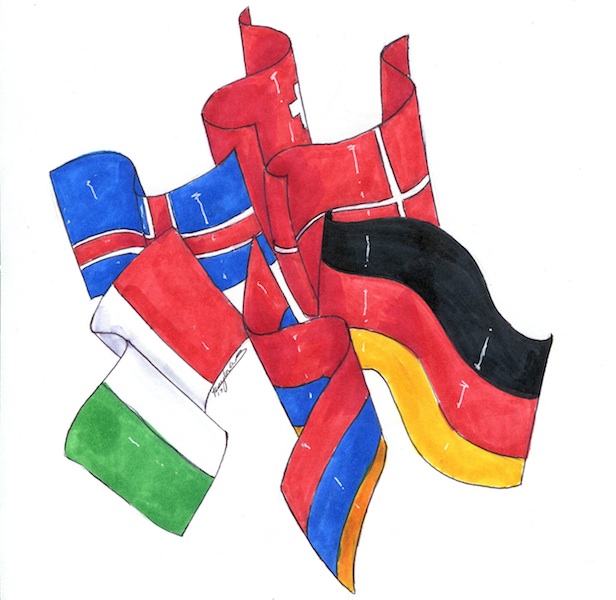Multilingualism Thrives on Campus
March 8, 2017
Most students take two or three years of either Spanish or French, but some students at SJHHS are passionate about foreign culture and want to become multilingual.
Junior Asta Olafsdottir moved to the U.S. three years ago after living in Iceland and the Netherlands, and she is able to speak four languages: English, Icelandic, Danish, and Dutch.
Olafsdottir said in Iceland, “Everyone speaks Icelandic, but in school everyone needs to learn Danish and English, and then most people learn either Spanish, French, or German in high school.”
In addition to knowing four languages, Olafsdottir is also currently enrolled in Spanish II, and while America has a reputation for lacking in bilingualism when compared to Europe, she said she did not notice any major differences in the way the language is taught.
“I’m learning a new language in English, but I used to learn a new language in Icelandic, but the way it’s taught is pretty similar,” she said.
The main reason for such a high level of language proficiency in Europe is the close proximity of the countries, while America lags in language education because it only borders Canada, which speaks predominantly English, and Mexico, which is very distant for the majority of the U.S.
“In Europe everyone knows English, but in Holland I noticed a lot of people knew German because it’s a neighboring country,” Olafsdottir said.
While the majority of Americans speak only one or two languages, some students at SJHHS are striving to learn more.
Junior Gigi Martin is currently taking AP Spanish V and French I, and she plans on studying more languages after high school.
“I have a goal of learning all the romance languages, which is Spanish, French, Portuguese, and Italian,” Martin said. “It’s mostly a personal thing, being able to go to other parts of the world, and just be able to communicate and live there if I need to.”
Martin said learning French is easier after studying Spanish because there are many similarities between the two languages. Additionally, her French teacher, Betsy Schmitz, speaks Spanish and is able to use that knowledge in the classroom.
“When we’re learning the breakdown of sentence structure in French, she’ll explain it to me in Spanish,” Martin said. “They have the same root. They are Latin derived languages, so they are only slightly different.”
Martin said one source of inspiration to learn new languages was a trilingual foreign exchange student that has been living with her family for two years and who travels to different countries volunteering.
SJHHS currently offers only Spanish and French, and students will be traveling to Spain during spring break in order to practice the language and engage in the culture.


